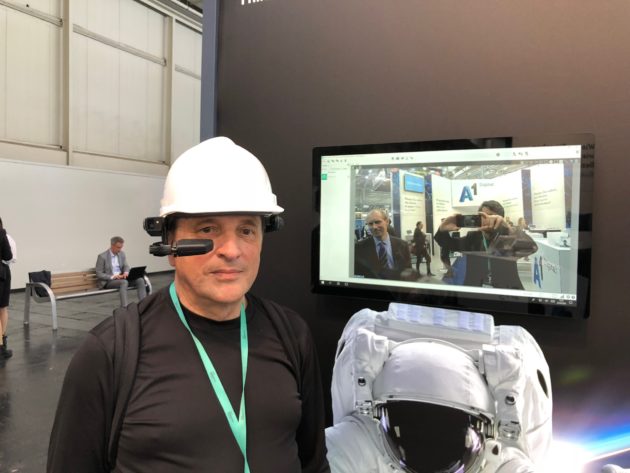I went from Germany to Las Vegas and the time change screwed with my posting schedule. So…I am finally finishing up my Hannover Messe reporting before I begin with my recent trip.
My last post detailed the first round of briefings with Hewlett Packard Enterprise. Today I’ll finish up.
But first, a digression.
OPC
Misinformation about what exactly OPC UA is continues to circulate within the industry. I had at least three conversations where people referred to OPC as proprietary. Plus OPC and MQTT are mistakenly considered competitive rather than complementary. OPC Foundation still has some evangelizing to accomplish.
A few years ago it appeared that major automation vendors were ignoring OPC and its interoperability tending toward self-encased solutions. In fact, I got dissed by some dude on YouTube for a report I did on that subject.
Time has passed. More and more people and companies recognize the value of interoperability and OPC UA. No doubt the PubSub helps in some cases. And without a doubt the combination of OPC UA and TSN is enticing to many.
HPE
HPE has devised an application dubbed “Remote Visual Guidance.” It began with an eLearning application HPE MyRoom. Integrated with a hard hat, a camera, and glasses that project an image to the user, the system enables remote support from an expert who may not be able to fly to the site. Imagine working in a remote location such as an offshore oil rig where flying in an expert is both dangerous and expensive, for example. The system comes in three versions—wearable say integrated with a hard hat, smart phone app, or tablet app. Therefore, the three versions are No hands, 1 hand, and 2 hands). Try this for a potential use case for a value add from an OEM. The OEM bundles the app with its machine. This gives the customer direct contact with remote expert for the cost of perhaps a service contract.

I had a good conversation with HPE’s Christian Reichenbach on Blockchain technology. I believe this technology is quickly moving past hype into something we can use. The concepts of trusted transaction and ledger have immediate appeal for industries such as pharma manufacturing. We can think of many more.
Reichenbach identifies three waves of blockchain.
Wave One is personal exemplified by crypto currency—the Bitcoin that garners most of the press
Wave Two came with Enterprise to Enterprise transactions. For example, he pointed to the vision system QA demo at the HPE stand. It uses blockchain to send QA report as a secure, trusted transaction that includes a record.
Wave Three includes Things to Things. This means systems around products leading to systems of systems thinking. Things become autonomous actors. They contract with each other with no middle man. It includes ledger systems. Let’s take the example of an HPE Edge Gateway plus Etherium (an HPE partner). Perhaps it’s the same concept as loyalty card scanning and giving you value for using it. Let’s look at a car. Currently there are lots of sensors but no marketplace to exploit all that data. Say we take Edgeline device connected to CANbus of the car. Then, say, connect to the rain sensor or a sensor in the shock absorber. Previously the end user gave data away for free, but now maybe the car makes a smart contract with weather channel or Waze and sells the data.
One last item I gleaned from the Microsoft booth. HPE has a starter kit to help users easily connect devices to the cloud using HPE Edgeline, Softing (OPC UA kit), and Microsoft Azure.
Overall analysis from HPE visit at Hannover was that IoT has matured in a sense from a department with a product to infusing into the entire manufacturing product and service portfolio.





Trackbacks/Pingbacks